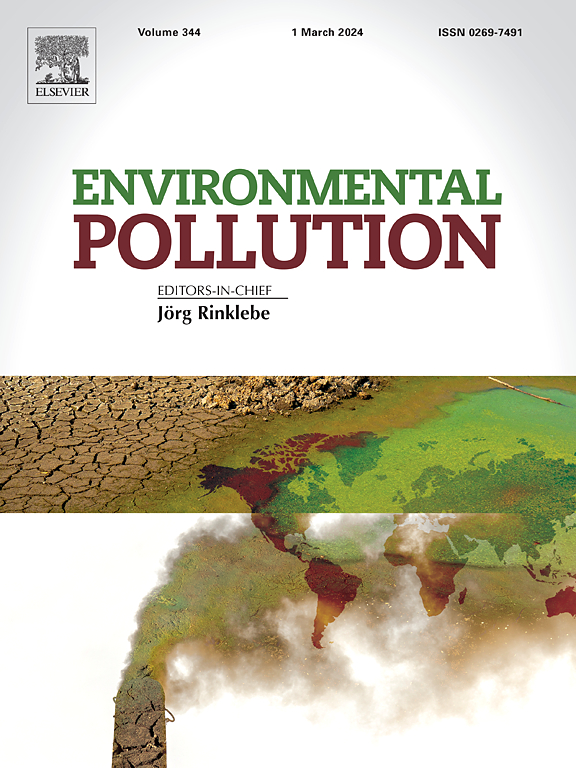Spatiotemporal variations of dissolved nitrous oxide concentrations in small water bodies in a typical urban landscape in eastern China
IF 7.6
2区 环境科学与生态学
Q1 ENVIRONMENTAL SCIENCES
引用次数: 0
Abstract
Waters in urban landscape are susceptible to nitrogen (N) pollution, potentially leading to supersaturation of dissolved nitrous oxide (N2O) and making them a source of atmospheric N2O. However, the spatiotemporal variations and driving factors of dissolved N2O concentrations in these waters remain unclear. This study examined the spatiotemporal variations of dissolved N2O in an interconnected river-lake system in a subtropical urban landscape. The annual mean dissolved N2O concentration was 0.81 μg N L−1, with a mean N2O saturation of 304 %, indicating the system could act as a N2O emitter. Under the influence of daily fluctuations in water temperature and DO, the diurnal variation of N2O was most pronounced in autumn, with the smallest amplitude observed in winter. Seasonal mean concentrations of dissolved N2O, N, phosphorus (P), chlorophyll-a (Chl-a) and dissolved oxygen (DO) peaked in winter and were lowest in summer. The central lake had significantly lower dissolved N2O, N and P concentrations, but possessed higher water temperature, pH, concentrations of Chl-a and DO than its upstream and downstream rivers. Dissolved N2O concentrations were positively correlated with concentrations of N and P, but negatively with pH, Chl-a, and DO. There was intensifying competition for N between the N2O producers and algae, particularly in summer or in the central lake area. Therefore, the spatiotemporal variations of dissolved N2O concentrations were primarily driven by the integrated effects of seasonal conditions, nutrient fluctuations and algal growth. This research can provide essential scientific guidance for developing the effective strategies to control N pollution and mitigate the risk of N2O emissions from water bodies in urban landscape.


求助全文
约1分钟内获得全文
求助全文
来源期刊

Environmental Pollution
环境科学-环境科学
CiteScore
16.00
自引率
6.70%
发文量
2082
审稿时长
2.9 months
期刊介绍:
Environmental Pollution is an international peer-reviewed journal that publishes high-quality research papers and review articles covering all aspects of environmental pollution and its impacts on ecosystems and human health.
Subject areas include, but are not limited to:
• Sources and occurrences of pollutants that are clearly defined and measured in environmental compartments, food and food-related items, and human bodies;
• Interlinks between contaminant exposure and biological, ecological, and human health effects, including those of climate change;
• Contaminants of emerging concerns (including but not limited to antibiotic resistant microorganisms or genes, microplastics/nanoplastics, electronic wastes, light, and noise) and/or their biological, ecological, or human health effects;
• Laboratory and field studies on the remediation/mitigation of environmental pollution via new techniques and with clear links to biological, ecological, or human health effects;
• Modeling of pollution processes, patterns, or trends that is of clear environmental and/or human health interest;
• New techniques that measure and examine environmental occurrences, transport, behavior, and effects of pollutants within the environment or the laboratory, provided that they can be clearly used to address problems within regional or global environmental compartments.
 求助内容:
求助内容: 应助结果提醒方式:
应助结果提醒方式:


